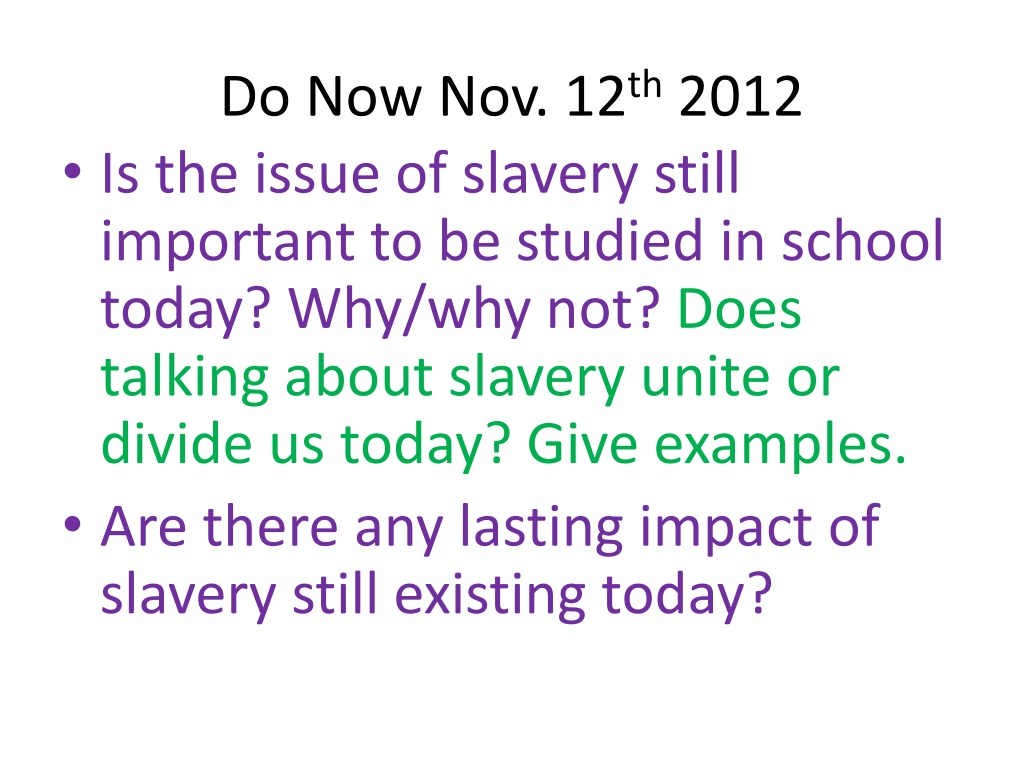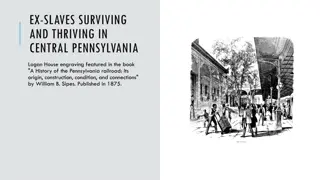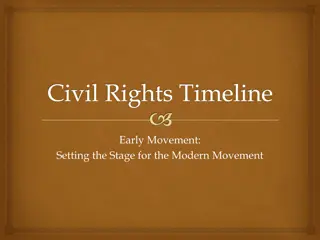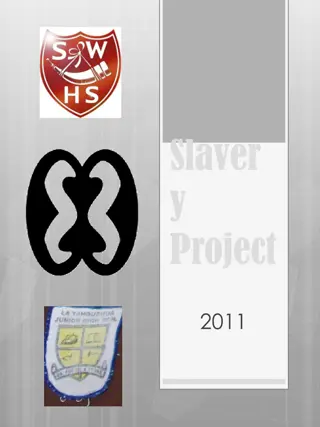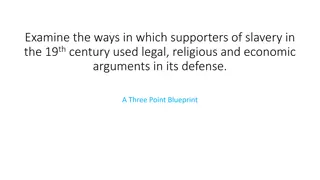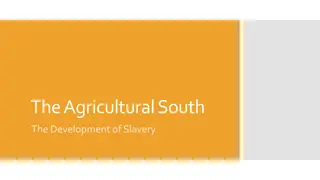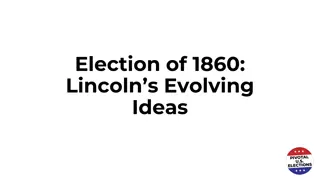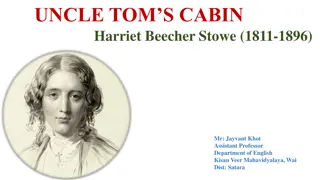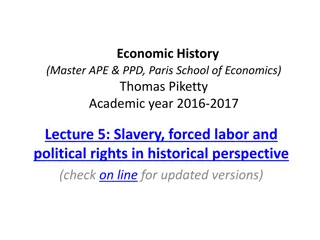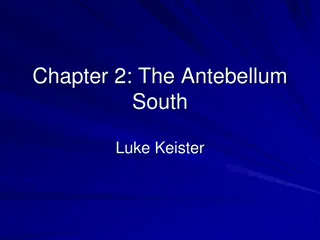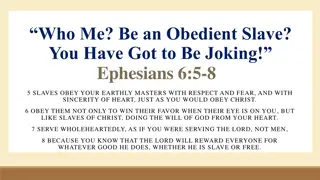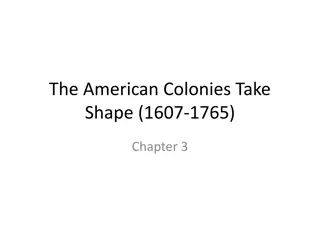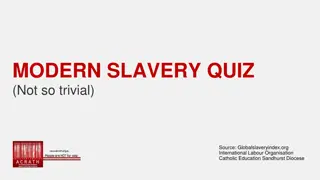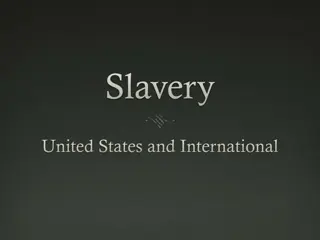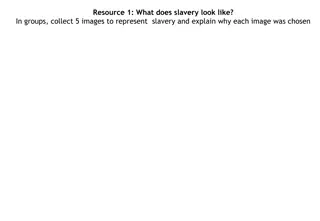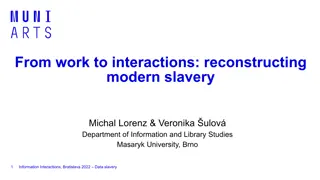Relevance of Studying Slavery in Modern Education
The issue of slavery remains significant in modern education as it explores its impact on society, unity, and division. Discussing slavery can both unite and divide us today, with lasting impacts evident in various aspects of society. The historical context, including events like Nat Turner's Rebellion, William Lloyd Garrison's activism, and the Missouri Compromise, sheds light on the relationship between north-south divisions and westward expansion.
Download Presentation

Please find below an Image/Link to download the presentation.
The content on the website is provided AS IS for your information and personal use only. It may not be sold, licensed, or shared on other websites without obtaining consent from the author.If you encounter any issues during the download, it is possible that the publisher has removed the file from their server.
You are allowed to download the files provided on this website for personal or commercial use, subject to the condition that they are used lawfully. All files are the property of their respective owners.
The content on the website is provided AS IS for your information and personal use only. It may not be sold, licensed, or shared on other websites without obtaining consent from the author.
E N D
Presentation Transcript
Do Now Nov. 12th2012 Is the issue of slavery still important to be studied in school today? Why/why not? Does talking about slavery unite or divide us today? Give examples. Are there any lasting impact of slavery still existing today?
DoNow Nov. 13th, 2012 Why did the South depend more on slave labor than the North? Are there any issues that create divisions between regions in the US today? Examples
DoNow Nov. 14th,2012 What did the Missouri Compromise and the Missouri Compromise line do?
Standard SSUSH 8 The student will explain the relationship between growing north-south divisions and westward expansion. a) Explain how slavery became a significant issue in American politics; include Nat Turner s Rebellion and the rise of abolitionism [William Lloyd Garrison, Frederick Douglass, and the Grimke sisters]. Explain the Missouri Compromiseof 1820 and the issue of slavery in western states and territories. Describe the Nullification Crisis and the emergence of a states rights ideology; include the role of John C. Calhoun and the development of sectionalism. Describe the Mexican-American War and the Wilmot Proviso. Explain how the Compromise of 1850 arose out of territorial expansion and population growth. b) c) d) e)
Nat Turners Rebellion Most famous/influential of slave rebellions in the south Southern response stricter slave laws and greater support for the institution of slavery Increase of sectionalism over slavery
William Lloyd Garrison 1831 published newspaper The Liberator Advocated for abolition of slavery Considered by southerners as most radical of abolitionists His newspaper banned in the South
Frederick Douglass Former slave and famous abolitionist Wrote influential autobiography and other works Forcefully argued for African American freedom and rights before and after the Civil War
Grimke Sisters Southern sisters and abolitionists Lectured and wrote against slavery Became women s rights activists later in life Banned in the South
Missouri Compromise of 1820 Compromise kept balance in Senate Missouri = slave state, Maine = free state Banned expansion of slavery elsewhere in Louisiana Purchase Overturned by Kansas-Nebraska Act and Dred Scott Decision
Nullification Crisis Crisis over whether a state can nullify a federal law Tariff of Abominations President Jackson vs. Vice President John C. Calhoun Jackson threatened to use military force in South Carolina
John C. Calhoun Most influential Southern Politician before the Civil War Vice President, Cabinet member, S.C. Senator Advocate of states rights, sectionalism, nullification Role in all Sectionalism crises Missouri statehood, Nullification, California statehood.
Sectionalism devotion to one s region or state greater than one s devotion to nation. Economic differences between N & S increased sectionalism Disagreement over Tariffs increased sectionalism Disagreement over extending slavery into the territories increased sectionalism
States Rights Before the Civil War Idea that ultimate political authority resides in the sovereign states and not the national government Articles of Confederation precedent for idea Virginia and Kentucky Resolutions of Jefferson and Madison Infamous Dred Scott Case One Cause of the Civil War
Mexican-American War Controversial war first for US on foreign soil Defeat of Mexico = vast new territories, US a continental nation New territories Old problem = whether or not to allow the spread of slavery .
Wilmot Proviso Wilmot Proviso-no slavery to be allowed in territories obtained from Mexico Controversial amendment kept issue of the spread of slavery at the top of nation s agenda Wilmot Proviso basis for the creation of Republican Party of Abraham Lincoln
Compromise of 1850 Compromise of 1850 Provisions Calif. Added as free state Tougher fugitive slave laws for the south New Mex., Utah allowed to vote whether to be free or slave [popular sovereignty] Results of Compromise - postponed but did not prevent Civil War for10 years
